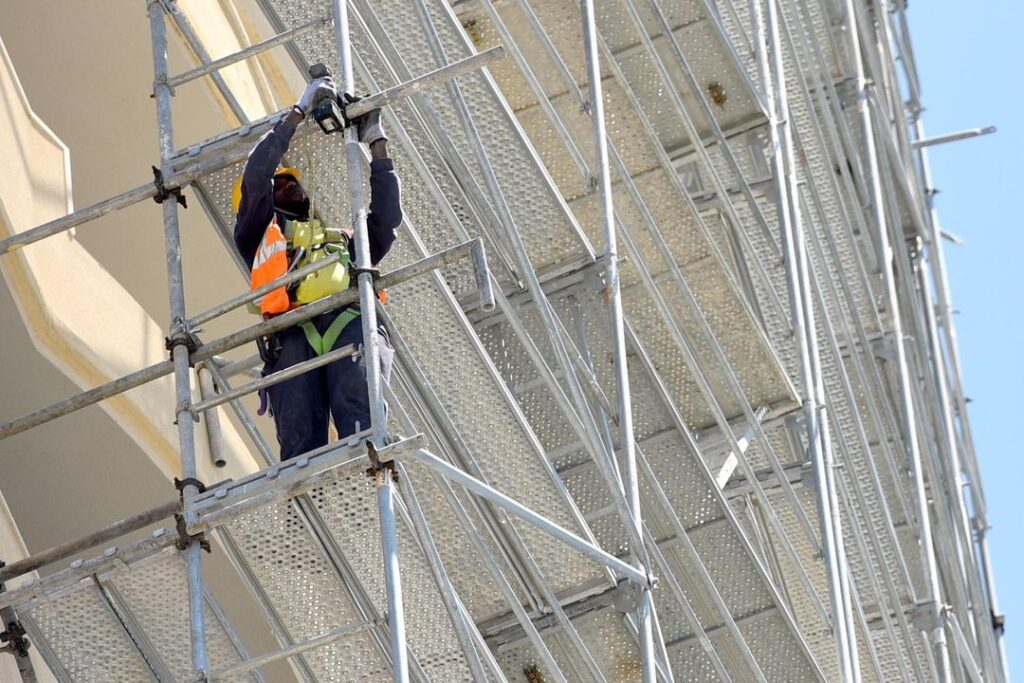Data tabled recently in parliament sheds new light on several claims about the role that foreign workers play in Malta’s economy and labour market.
Malta’s changing demographics have led to widespread confusion, including debunked claims about Malta’s true population, as well as the number of foreigners residing in Malta. Misleading or incorrect claims over the presence of foreigners in Malta’s job market and subsequent impact on the economy have persisted ever since the 2021 census revealed that Malta had the sharpest population growth in the EU over the previous decade, primarily driven by an influx of foreign working-age men.
Some of these claims argue that the contribution of foreign workers to Malta’s labour market is grossly overstated, while others claim that Maltese workers are being squeezed out of their jobs. Others still argue that foreign workers have been key to Malta’s economic growth, with several industries becoming overwhelmingly reliant on foreign employees to function.
Data presented in parliament by Finance Minister Clyde Caruana reveals how Maltese workers are moving away from construction, manufacturing and retail jobs in favour of white-collar professions or office jobs, with foreign workers stepping in to fill in the gaps.
The data shows, perhaps for the first time, how Malta’s workforce is changing and the extent to which foreign workers have been driving economic growth across several industries.
Where are Maltese workers working?
There are roughly as many Maltese and Gozitans in the labour market today as five years ago, with the overall number only rising marginally from 197,000 in 2019 to 203,000 in 2023.
However, the number of them working in sectors often associated with manual labour, such as manufacturing, vehicle repair and construction, appears to be on a downward trend.
The number of Maltese working in tourism also appears to have dipped, with Maltese workers in the accommodation and catering sector dropping by 15% since 2019.
On the other hand, the number of Maltese workers in professional and administrative roles has ballooned in recent years.
Maltese nationals working in jobs classified as professional, scientific or technical have shot up from 12,700 to 15,300 in the past five years. These include professions such as lawyers, architects, accountants and translators, amongst others.
Likewise, there are now also more Maltese workers in administrative positions and, notably, in public administration, compared to five years ago.
Foreign workers filling gaps vacated by Maltese
This doesn’t mean that the industries being abandoned by Maltese workers are dying.
On the contrary, foreign workers appear to be stepping in to vacate the gaps left by the Maltese workers across several of these industries, with non-Maltese workers now making up some 35% of the total workforce.
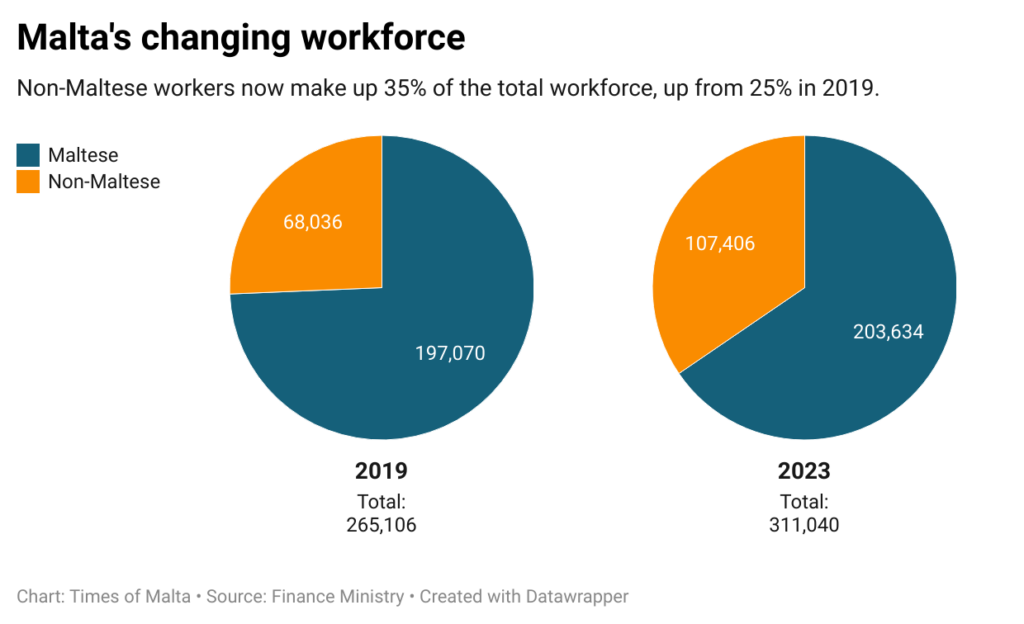
The number of foreign workers in construction has shot up by over 70%, going from a little over 6,100 in 2019 to over 10,500 five years later.
Meanwhile, those working in retail or vehicle repairs have almost doubled, from 5,600 to 10,300 during the same period.
There are also 15,200 foreign workers in accommodation or catering today, 4,000 more than there were in 2019.
In total, the number of foreign workers has multiplied from just under 70,000 in 2019 to over 107,000 last year.
This figure stood at just 18,700 a decade ago, meaning it has ballooned by almost 500% since 2013.
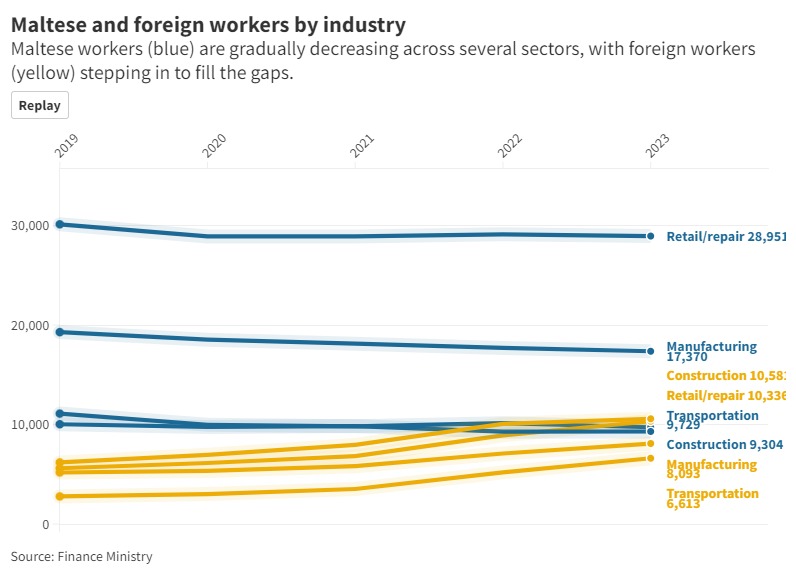
This data reflects comments in a recent IMF report which observed that there “has been a tendency for foreign workers (especially those from non-EU countries) to flow into low-productivity sectors (such as accommodation and construction)”, simultaneously pushing Maltese workers towards higher paying jobs and keeping wages low.
Where are foreign workers from?
The data also sheds light on the provenance of foreign workers, showing how an influx of third-country nationals in recent years is sustaining Malta’s economy.
The number of EU nationals working in Malta has dipped slightly between 2019 and 2023, dropping by some 700 people to 34,900.
This dip is mostly driven by Brexit, meaning that the 5,100 British nationals working in Malta are no longer classed amongst this group.
The number of third-country nationals working in Malta, on the other hand, has almost tripled, rising from 25,600 in 2019 to 68,700 five years later.
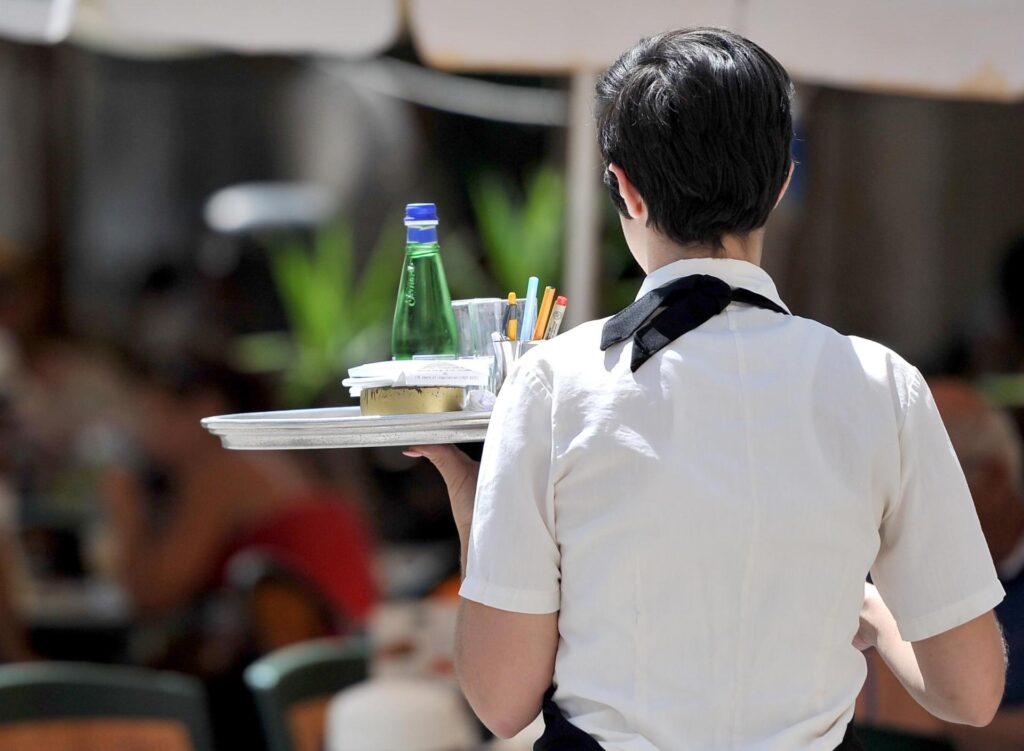
The sharpest rise was amongst Southern Asian workers.
The number of workers from India rose by almost 10,000 since 2019, now reaching just over 13,000, making them the largest non-Maltese group in Malta’s labour market. Likewise, Nepalese workers increased from 1,700 in 2019 to just over 8,000 last year.
Workers from several other Southern Asian countries, such as Bangladesh and Pakistan also increased, albeit to a lesser extent.
Looking further east, the number of workers from the Philippines doubled since 2019, now reaching 9,500 while, on the other side of the globe, Colombian workers shot up from just 226 to a little over 3,100 in the past five years.
Closer to home, Albanian and Turkish workers have also become increasingly active in Malta’s workforce, with the former now becoming one of the most widely represented nationalities, with 3,400 workers.
EU nationals, on the other hand, have remained fairly stable in numbers over the past years, with workers of most nationalities increasing slightly over the past five years. Our closest neighbours Italy tops the list of EU nationals, with over 11,500 Italians currently in Malta’s workforce.
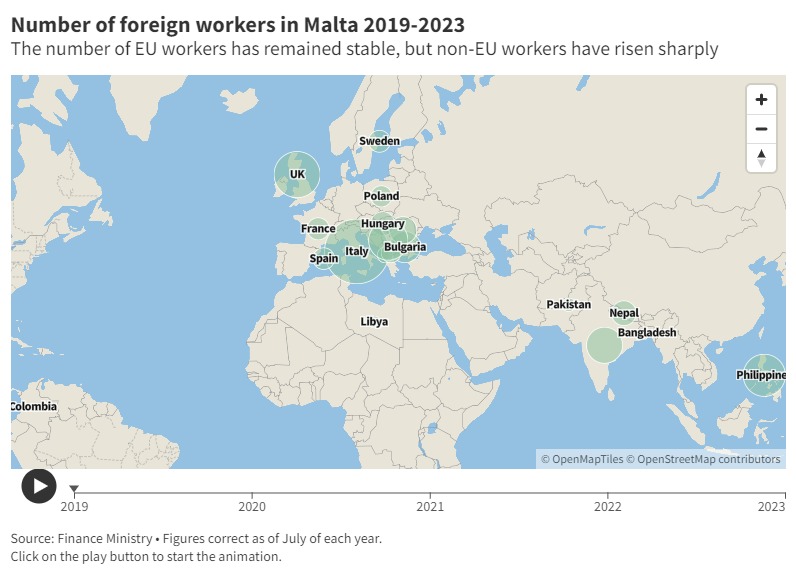
Third-country nationals in the construction industry
The data also reveals how third-country nationals are far more likely than their European counterparts to be working in the construction industry.
Over four out of every five foreign workers in the industry are from outside the EU. In fact, more than one out of every 10 third-country nationals work in construction, double the ratio of their EU counterparts.
Workers from some countries are particularly likely to be involved in construction.
Of Malta’s 3,400 Albanian workers, some 1,500 (or 43%) are involved in the construction sector. Likewise, just under half of the almost 2,800 Turkish workers and three-quarters of the 480 Syrian workers in Malta are in the industry.
Government pledging to limit third-country nationals
Over the past year, the government has pledged to limit the number of non-EU nationals in Malta, hoping to curb abuse and exploitation by introducing measures to prevent businesses from focusing solely on importing workers and moving to licence temping agencies.
It is too early to know whether these measures have had any impact as yet, but the figures show early signs of a possible slowdown in the number of foreign workers moving to Malta.
The first seven months of 2023 saw an influx of 9,000 foreign workers, a 12% drop over the same period the previous year.
This is particularly evident in some sectors, such as construction and administration, where the increase of foreign workers has been less pronounced than in most previous years.
Verdict
While the overall number of Maltese workers in the workforce has remained stable, only rising marginally since 2019, those of foreign workers has increased dramatically during the same period, now making up 35% of the total workforce.
Maltese workers are increasingly moving away from tourism servicing jobs as well as sectors associated with manual labour and switching to white-collar industries and professional or administrative roles.
Meanwhile, gaps within the tourism industry, the construction sector, retail and manufacturing are being filled by foreign workers who have moved to Malta in recent years, many of which come from South-Eastern Asian countries such as India, Bangladesh and Pakistan, as well from the Philippines and Colombia. Some sectors, such as construction, are also heavily reliant on workers from Albania, Turkey and Syria.

